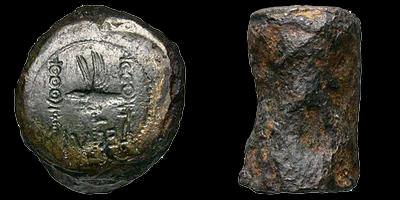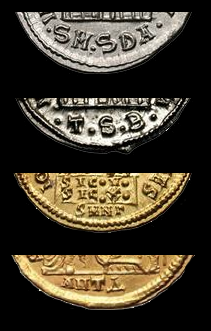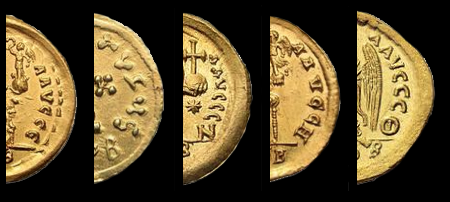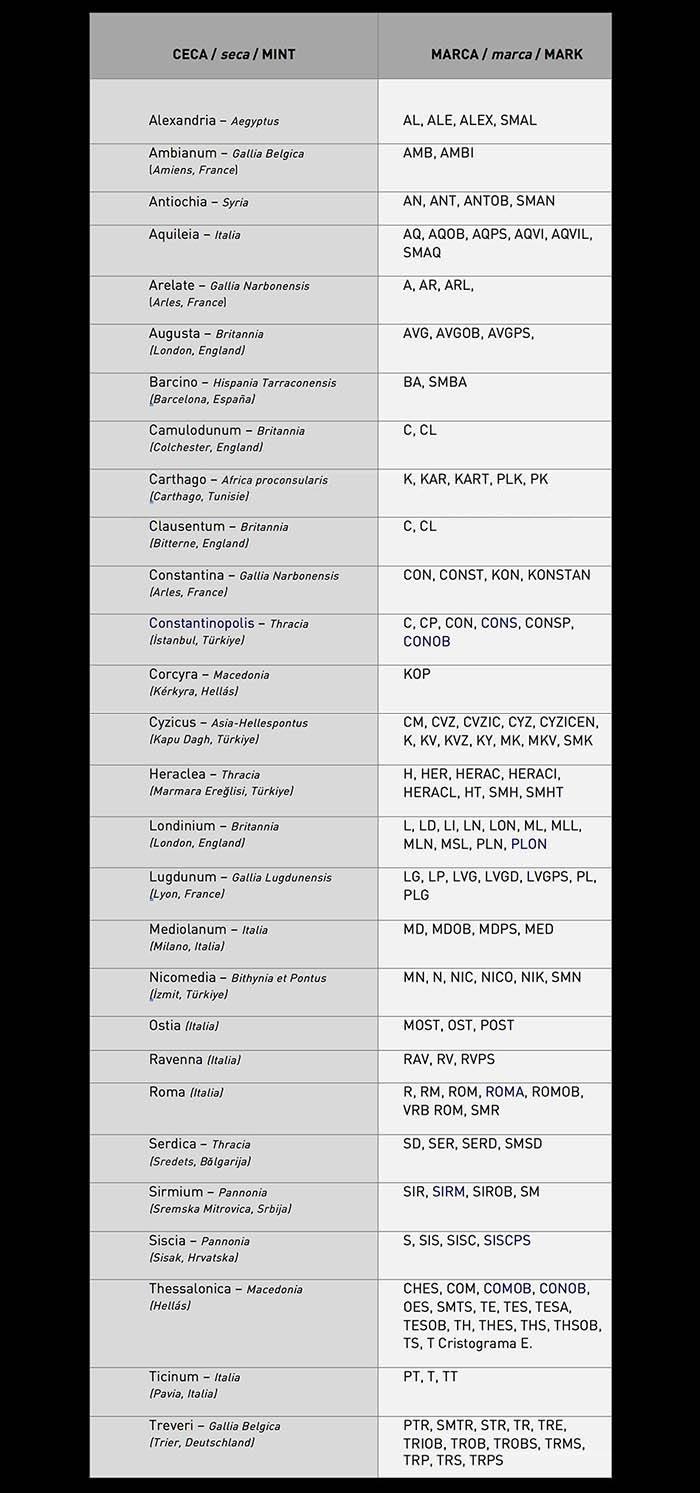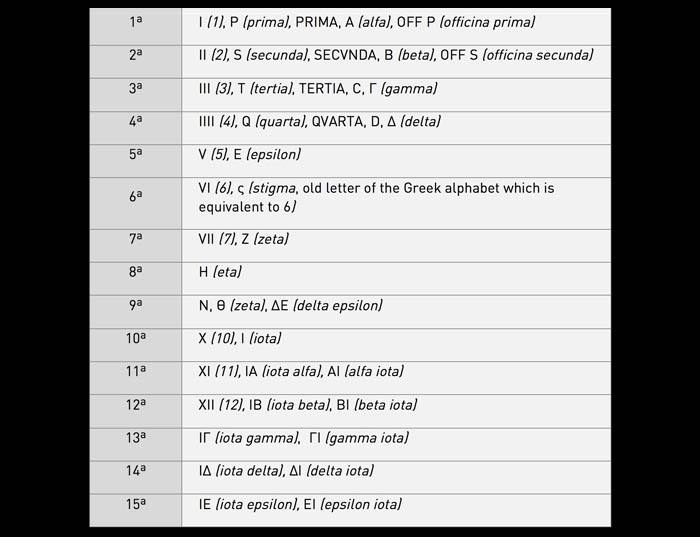Mints and officinae
A mint is the place where coins are manufactured or issued.
The stamp or die is a piece of hard metal, generally cylindrical, which on one end has the details in negative that appear later on the coinage. Minting means beating, punching, printing coins with a stamp: the hammer strikes the die and this hits the blank, which is the softer piece of metal piece placed between the die and the anvil, which becomes coinage after being hit. One stroke prints the piece on both sides and incorporates obverse and reverse designs that the moneyer has engraved in negative on the ends of the die and the anvil.
In the mid-third century AD, the Roman mints began incorporating marks on the coins as a way to control the emissions of monetary officials. In addition to the mint, often the officina was identified: the workshop of origin of the coins from those of the same mint. If a problem was detected in an emission (underweight, for example), deficiencies could be attributed to a particular officina and officials be held liable.
The marks were placed on the reverse of the coin, almost always in the exergue. Exceptionally, they can be found on the reverse side or even on the obverse.
In most cases, the marks were formed with three or four elements:
